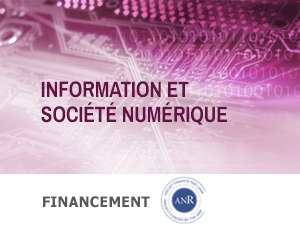In numerous fields (e.g., material sciences, medical imaging), non-invasive acquisition devices such as magnetic resonance, X-ray tomography or microtomography are required for observation, measurements or diagnostic aids. These acquisition devices usually generate volumic data, i.e., 3D images, composed of regularly spaced data in a cuboidal domain. 3D volumes come from the segmentation of such 3D images. They can also be generated from scientific modelling because numerous simulation schemes rely on the regularity of the data support.
PARADIS is a project about geometry of 3D volume boundaries, called digital surfaces. Keeping the digital nature of the data is an advantage to do integer-only and exact computations, to perform constructive solid geometry operations, or to use efficient spatial data structures. A drawback is its poor geometry: a digital surface is only made up of quadrangular surface elements whose normal vector is parallel to one axis, whatever the resolution. Many high-level tasks in computer graphics, computer vision and 3D image analysis require a richer geometry, e.g., rendering, surface deformation for physical simulation or tracking, precise geometric measurements. To perform relevant geometric tasks and to benefit from the above-mentioned advantages in the same time, one need to enhance the geometry of digital surfaces by estimating extra information for each surface element. This project focuses on estimations of local and first-order geometric quantities such as normal vector direction. It aims at providing accurate and parameter-free estimators based on a surface patch with adaptive size around each surface element. Since we are looking for first-order estimations, the patch will be typically a piece of digital plane that locally fits the digital surface.
A challenge is to cover the whole digital surface by maximal pieces of digital plane. Such a cover not only provides a normal vector field, but may also provide, if computed for several subsampled versions of the input 3D volume, a way of determining the scale at which noise is unlikely: a high number of very small digital plane segments indicate noise, whereas smooth parts are decomposed into a smaller set of larger segments.
What is challenging is that there is a combinatorial explosion of maximal pieces of digital plane and that among them, not all are tangent to the digital surface. An opportunity to make a breakthrough regarding this issue is to consider the recent development of plane-probing algorithms, proposed by the principal investigator and his collaborators. These algorithms allow to decide on-the-fly how to probe the digital surface and make grow a digital plane segment, which is tangent by construction. The growth direction is given by both arithmetic and geometric properties. PARADIS aims at analyzing digital surfaces with the help of plane-probing algorithms.
We expect positive impacts in computer graphics, computer vision and 3D image analysis because the above-mentioned high-level tasks and many others, such as primitive extraction and scene understanding, rely on the quality of normal estimation. In addition, since many 3D images may be degraded with noise, especially in medical imaging, noise detection is a crucial task, which may become a key step of 3D image processing pipelines.
What is challenging is that there is a combinatorial explosion of maximal pieces of digital plane and that among them, not all are tangent to the digital surface. An opportunity to make a breakthrough regarding this issue is to consider the recent development of plane-probing algorithms, proposed by the principal investigator and his collaborators. These algorithms allow to decide on-the-fly how to probe the digital surface and make grow a digital plane segment, which is tangent by construction. The growth direction is given by both arithmetic and geometric properties. PARADIS aims at analyzing digital surfaces with the help of plane-probing algorithms.
We expect positive impacts in computer graphics, computer vision and 3D image analysis because the above-mentioned high-level tasks and many others, such as primitive extraction and scene understanding, rely on the quality of normal estimation. In addition, since many 3D images may be degraded with noise, especially in medical imaging, noise detection is a crucial task, which may become a key step of 3D image processing pipelines.


